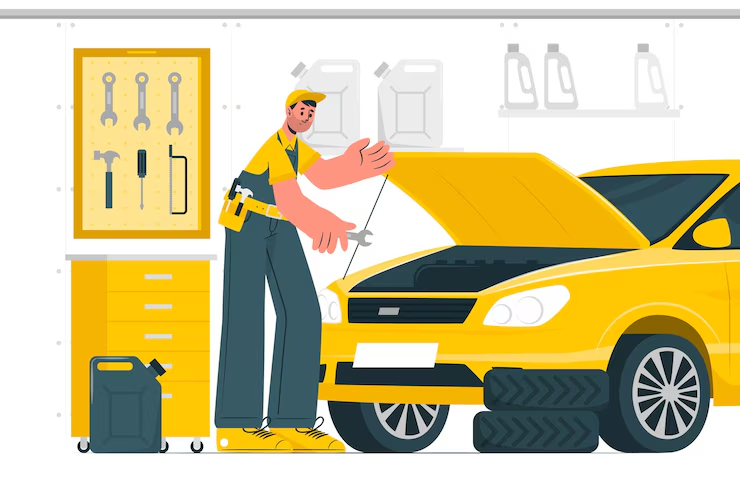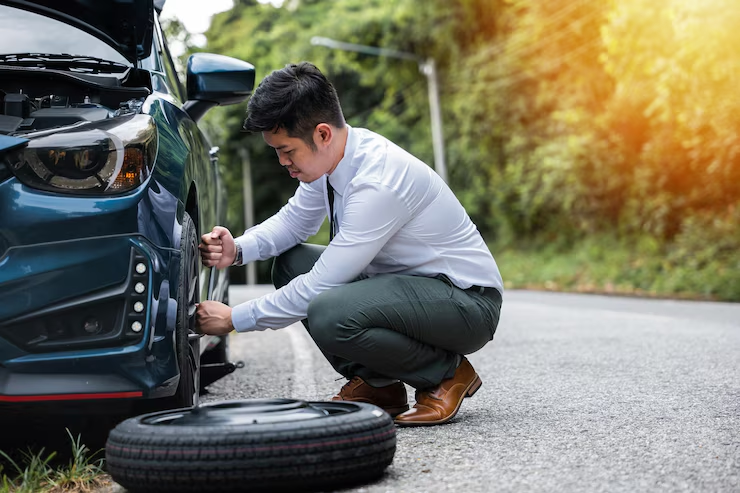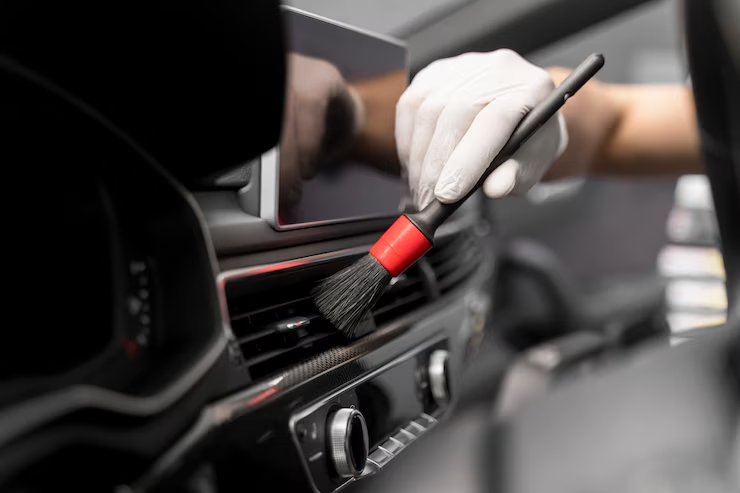
What is Auto Care on a Car
Auto care refers to the routine maintenance and repair practices performed on a vehicle to ensure its optimal performance and longevity. Regular auto care helps prevent breakdowns and costly repairs, ensuring that a car remains safe and efficient on the road. This proactive approach can enhance the driving experience and increase the vehicle’s resale value over time.
Many car owners may underestimate the importance of auto care, thinking that a vehicle will run fine without regular attention. However, neglecting basic upkeep can lead to significant issues down the line. Simple tasks such as oil changes, tire rotations, and brake inspections play a crucial role in the overall health of a car.
The benefits of auto care extend beyond just immediate functionality. Maintaining a vehicle according to manufacturer guidelines can improve fuel efficiency and reduce emissions, contributing to a cleaner environment. By incorporating regular auto care into their routine, car owners can enjoy peace of mind knowing their vehicle is well cared for.
Understanding Auto Care

Auto care refers to a series of maintenance practices aimed at keeping a vehicle in optimal condition. It includes routine inspections, repairs, and cleaning tasks to enhance performance and longevity.
Key components of auto care include:
- Regular oil changes: Ensures the engine runs smoothly.
- Tire maintenance: Involves checking tire pressure and tread depth for safety.
- Brake inspections: Critical for ensuring braking efficiency.
Additional tasks to consider are:
- Fluid checks: Coolant, brake fluid, and transmission fluid should be monitored.
- Filter replacements: Air and fuel filters should be changed periodically.
- Battery care: Regular checks can prevent unexpected failures.
Auto care also involves cleaning both the interior and exterior of the vehicle. A clean car not only looks good but also helps preserve the paint and interior materials.
Many people opt for professional auto care services. These services can provide expertise that may not be available to the average car owner.
Owners can also perform simple tasks themselves. Basic maintenance helps foster a better understanding of vehicle health and can save on repair costs.
In summary, auto care is essential for ensuring vehicle safety, efficiency, and reliability. Regular attention to these areas can lead to a better driving experience.
Routine Maintenance and Inspection
Routine maintenance and inspection are crucial for keeping a vehicle in optimal condition. These practices help prevent costly repairs and ensure safety on the road. Key areas for regular checks include oil changes, tire condition, brakes, and battery health.
Oil Changes and Fluid Checks
Regular oil changes are vital for engine performance. It is generally recommended to change the oil every 3,000 to 5,000 miles, depending on the type of oil used and driving conditions. Regular checks of transmission fluid, coolant, brake fluid, and power steering fluid can prevent major issues.
Neglecting these fluids can lead to overheating or mechanical failure. If the oil appears dark or gritty, it’s time for a change. A thorough inspection may take about 30 minutes, providing peace of mind and enhancing longevity.
Tire Pressure and Tread Wear
Maintaining proper tire pressure is essential for optimal fuel efficiency and vehicle handling. Most vehicles display the recommended pressure in the owner’s manual or on the driver’s door jamb. Checking tire pressure once a month, or before long trips, is advisable.
Tread wear is another critical factor. Tires should be replaced when tread depth reaches 2/32 of an inch. Additionally, a simple penny test can help gauge tread depth. Ensuring tires are in good condition promotes safety and traction on different surfaces.
Brake Inspection and Service
Brake maintenance ensures the safety of drivers and passengers. Regular inspections should focus on brake pads, rotors, and fluid levels. It’s recommended to have brakes checked at least once a year or when unusual noises occur.
Worn brakes can compromise stopping power. Signs of wear may include squeaking, grinding, or a spongy brake pedal. Replacing worn components promptly can prevent more extensive damage and enhance safety.
Battery Testing and Replacement
A vehicle’s battery is critical to its operation. Testing the battery at least once a year can identify signs of aging, such as reduced charge capacity or corrosion. Most batteries last between three to five years, so it is wise to track their age.
If a vehicle frequently has trouble starting or shows dim lights, the battery may need replacement. Proper recycling of the old battery is essential to avoid environmental harm. Regular checks can ensure reliability, especially in extreme weather conditions.
Exterior Care

Exterior care involves maintaining the vehicle’s surface, ensuring it remains clean and protected against environmental factors. This aspect of auto care includes washing, waxing, and addressing any damage that may occur.
Washing and Waxing
Regular washing is essential to remove dirt, grime, and contaminants. A specific car wash soap is recommended rather than dish soap, as it is designed to be gentle on the vehicle’s finish. Using a soft sponge or microfiber cloth will help prevent scratches.
After washing, applying wax protects the car’s paint. It creates a barrier against UV rays and contaminants. The process usually involves buffing the wax with a soft cloth to achieve a shine.
For sticky residues like tree sap, a specialized sap remover helps to address these without damaging the paint.
Paint Care and Scratch Removal
Maintaining the paint involves addressing scratches and stains promptly. For minor scratches, a touch-up paint or scratch repair kit can restore the vehicle’s appearance. If the damage is more extensive, professional help may be necessary.
Water spots can be removed using a mixture of vinegar and water. Applying this with a soft cloth can effectively eliminate the spots without harming the paint underneath.
For more stubborn paint marks, like over-spray, a dedicated paint remover is crucial. Care must be taken when using any chemicals to ensure they do not further damage the surface.
Windshield and Window Maintenance
Maintaining clear visibility starts with regular cleaning of the windshield and windows. Using glass cleaner, like Windex, is acceptable for the exterior. For interior surfaces, a microfiber cloth and glass cleaner ensure a streak-free finish.
To clean the windshield inside, a non-ammonia-based cleaner is recommended. This prevents damage to any tint or film.
Addressing chips or cracks quickly is crucial, as they can compromise safety. Professional repair kits for small chips are available. However, larger damage often requires a complete windshield replacement to ensure visibility and safety.
Interior Care

Maintaining the interior of a car is essential for comfort, aesthetics, and resale value. Two significant areas of focus are upholstery cleaning and odor elimination. Proper techniques and products can lead to a more enjoyable experience inside the vehicle.
Upholstery Cleaning
Cleaning car upholstery requires specific methods depending on the material. For fabric seats, a vacuum should be used to remove dust and debris. Then, a suitable upholstery cleaner can be applied. It’s vital to test any cleaner on a hidden area first to avoid discoloration.
For leather upholstery, a gentle cleaner and a soft cloth are recommended. Follow up with a leather conditioner to maintain suppleness.
Tools Needed:
- Vacuum cleaner
- Upholstery cleaner
- Soft cloths
- Leather conditioner
Regular cleaning prevents stains and extends the lifespan of the materials. If food particles or spills are found, addressing them quickly helps avoid long-term damage.
Odor Elimination
Removing unpleasant smells from a car interior requires targeted strategies. For cigarette and weed smells, it may involve deep cleaning of upholstery and carpets, along with the use of odor-neutralizing products.
Tips for Odor Removal:
- Use an enzyme-based cleaner for organic smells.
- Wash floor mats and seat covers regularly.
- Place activated charcoal or baking soda in the car to absorb odors.
If ants or other pests invade, a thorough vacuuming and checking for food sources is necessary. It’s advisable to use pest deterrents specifically designed for vehicles.
These methods help maintain a fresh-smelling environment, ensuring a pleasant driving experience.
Mechanical and Electrical Components
Understanding the mechanical and electrical components of a car is crucial for effective auto care. These systems interact closely to ensure the vehicle operates smoothly and efficiently. Key components include the starting and charging systems as well as the heating and cooling systems.
Starting and Charging Systems
The starting system is essential for initiating the engine’s operation. A typical car starter lasts about 100,000 miles but may require replacement earlier due to wear or electrical issues. Common symptoms of a failing starter include clicking noises or an engine that won’t crank.
The charging system, primarily composed of the alternator and battery, supplies power to the vehicle’s electrical components. If the battery is weak or the alternator fails, the car may exhibit dim lights or difficulty starting. Regular testing can prevent unexpected issues.
Heating and Cooling Systems
The heating and cooling systems maintain optimal operating temperatures for the engine and passenger cabin. A malfunctioning cooling system can lead to overheating, which may damage the engine. Drivers should watch for warning lights and monitor coolant levels regularly.
Water leaks under the car may indicate a problem with the cooling system, especially if coolant is escaping. Inadequate cabin heating could also signify a failing heater core. Regular inspection of hoses and clamps helps in early identification of issues.
Safety and Legal Considerations

Understanding the legal and safety obligations of car ownership is vital. This involves ensuring proper documentation and maintaining vehicle functionality to meet safety standards.
Legal Documentation for Car Ownership
Car owners must maintain specific legal documentation to demonstrate ownership and compliance with local laws. This includes the vehicle title, which proves ownership, and the vehicle registration, ensuring that the car is registered with the appropriate authority.
In most jurisdictions, individuals need a valid driver’s license to operate a vehicle. Failing to provide this documentation can lead to fines or legal consequences. Buying a car does not require a license; however, driving it does.
Furthermore, insurance policies are essential for legal compliance. A liability insurance policy protects against costs arising from accidents. Many states enforce mandatory insurance coverage, making it legally necessary to carry proof of insurance in the vehicle.
Vehicle Safety and Roadworthiness
Ensuring a vehicle’s safety and roadworthiness is crucial for both the driver and other road users. Regular maintenance, such as oil changes, brake checks, and tire rotations, helps keep the vehicle in optimal condition.
It is important to be aware of local regulations regarding safety standards. Cars must typically pass inspections to verify that safety features are functional. This includes lights, brakes, and tire conditions. Violating safety regulations can result in fines or penalties.
Drivers should also be informed about their rights and responsibilities if stopped by law enforcement. Officers may search a vehicle under specific conditions, such as probable cause. Understanding these rights can help owners navigate interactions with law enforcement more effectively.
Financial Considerations

Understanding the financial aspects of auto care is essential for any car owner. This section covers the costs associated with running and maintaining a vehicle, as well as the financial implications of insurance and potential damages.
Costs of Running and Maintaining a Car
The expenses involved in maintaining a vehicle can vary widely. Basic costs include fuel, routine maintenance, and repairs. A typical oil change can range from $20 to $100, depending on the vehicle and oil type used.
Additional costs might include:
- Tire replacements: $50 to $300 per tire.
- Brake pad replacements: $150 to $300.
- Window tinting: Generally $200 to $500, depending on the quality and type of film.
If considering exterior aesthetics, repainting a car can range from $500 to several thousand dollars. Car wraps, which can last 5 to 7 years, typically cost $1,500 to $3,000. Understanding these costs helps in budgeting for vehicle upkeep.
Insurance and Accidental Damage
Insurance is a crucial financial consideration for car ownership. Rates can vary based on factors such as the car’s value, the owner’s driving history, and coverage options. Average car insurance premiums range from $1,200 to $2,500 annually.
In the event of accidental damage, how insurance addresses these costs is significant. For example, fixing hail damage may not be worth it if the repairs exceed the car’s value. Additionally, hiring a locksmith for a locked car may cost $50 to $150.
Choosing the right insurance coverage can greatly affect overall expenses. Comprehensive policies may cover more, but they also increase monthly premiums. Budgeting for these aspects helps in managing financial obligations effectively.
Advanced Car Care

Advanced car care encompasses specialized maintenance techniques that enhance a vehicle’s performance and aesthetics. Focusing on engine performance and tuning, as well as exterior customization, is essential for both longevity and value.
Engine Performance and Tuning
Proper engine performance is critical for a car’s efficiency and reliability. Tuning involves adjusting various engine parameters to improve horsepower, torque, and fuel efficiency.
Key aspects of tuning include:
- ECU Remapping: Optimizes engine control unit settings.
- Performance Exhaust Systems: Enhances exhaust flow, reducing back pressure.
- Cold Air Intakes: Increase airflow to the engine, improving combustion.
Mileage is a key factor in assessing engine health. High mileage can indicate wear, so regular checks and tuning are essential to maintain optimal performance and extend the vehicle’s life.
Exterior Customization
Exterior customization enhances a vehicle’s appearance and can improve functionality. This includes modifications like paint jobs, decals, and aftermarket body kits.
Common customization options are:
- Wraps: Provide a fresh look without permanent changes.
- Spoilers and Body Kits: Improve aerodynamics and aesthetics.
- Upgraded Lighting: Enhances visibility and style.
Customization should align with personal taste while considering resale value. Certain modifications may appeal to buyers, while others may deter. Regular inspections ensure that aesthetic enhancements do not compromise safety and performance.
Brand and Model Specific Care
The care required for vehicles often varies significantly based on their brand and model. Understanding these differences can enhance the performance and longevity of a car.
Luxury and Performance Vehicles
Luxury vehicles, like Acura, demand meticulous attention to detail. These cars often feature high-end materials that require specific cleaning products to avoid damage. Regular detailing is essential for maintaining their appearance and resale value.
Performance vehicles necessitate adherence to specific maintenance schedules. Engine oil changes may occur more frequently to ensure peak performance. Additionally, tire maintenance is crucial; understanding the pressure requirements and tread wear can significantly impact handling.
Luxury cars may also utilize specialized fluids, such as unique coolant types, which should be checked regularly. Proper tire rotation is critical to ensure even wear and to protect performance.
Economy and Family Vehicles
Economy and family vehicles require a different approach, focusing on practicality and affordability. These cars usually have lower maintenance costs and parts readily available. Regular fluid checks and changes are vital, especially engine oil, coolant, and transmission fluids.
Typically, the fuel tank capacity of most economy cars ranges from 12 to 15 gallons. Understanding fuel economy ratings can help owners maximize efficiency.
Routine maintenance like brake inspections and tire rotations should not be overlooked. Family vehicles often experience heavier wear due to frequent use, especially in urban environments.
In the case of Hyundai vehicles, knowing where they are made can give insights into build quality. It is crucial to stick to the manufacturer’s recommendations for service intervals and repairs to maintain reliability.



